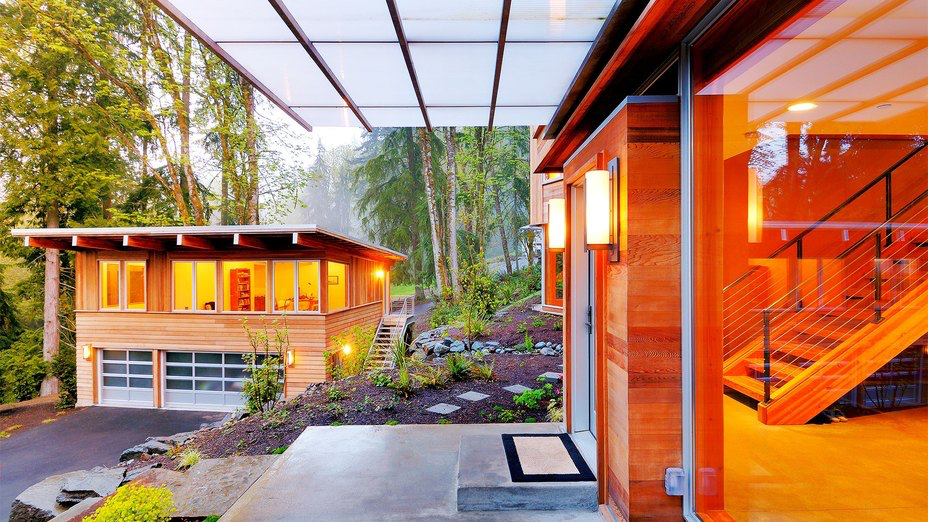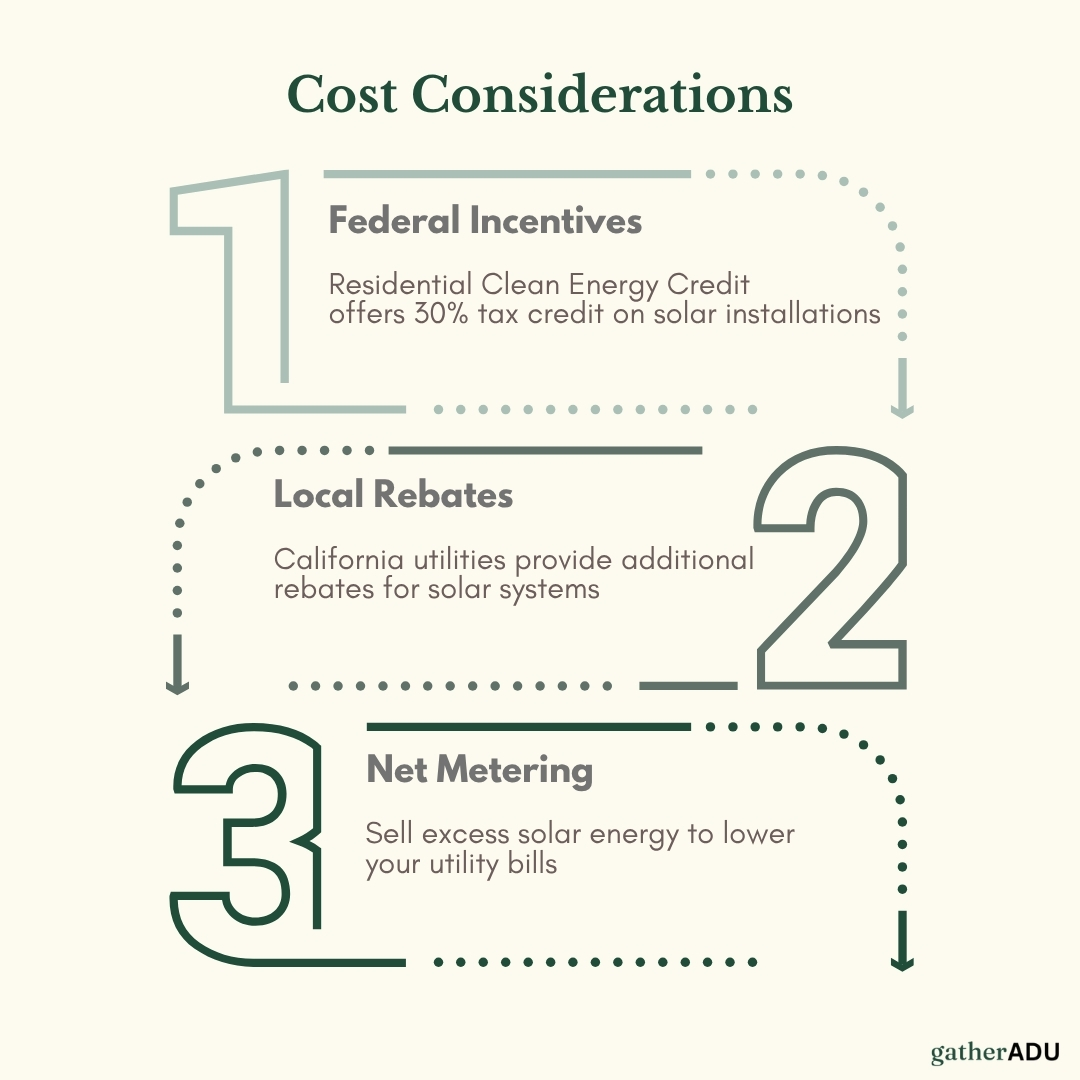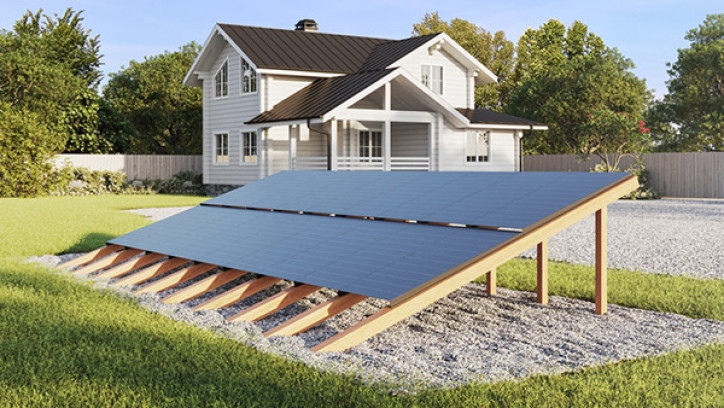ADU Knowledge
August 22, 2025
Why California’s Solar Mandates Matter for Your ADU Plans

.png)
Schedule a free appointment with one of our ADU experts.
Get ADU QuoteOr call: (323) 591-3717
California is leading the charge toward sustainable housing, and its Title 24 Building Energy Efficiency Standards are a big part of that push. These rules are designed to make homes more energy-efficient, lower utility bills, and reduce the state’s carbon footprint. For homeowners building an Accessory Dwelling Unit (ADU), one of the most essential requirements under Title 24 is the solar mandate. This rule ensures most new detached ADUs are powered, at least in part, by renewable energy.
Ready to turn your backyard into a valuable living space that’s energy-efficient from day one? Partner with trusted ADU experts at GatherADU who know the solar requirements, zoning laws, and design strategies inside and out. We will walk you through everything you need to know about California’s solar mandate for ADUs, from compliance and planning tips to cost considerations and innovative design strategies that make the most of your space and your budget. Contact us today at (323) 591-3717 for a free consultation and start your ADU project with confidence.

California’s Title 24 Building Energy Efficiency Standards require most new buildings to meet strict energy efficiency and sustainability goals. The 2022 Energy Code update introduced a solar mandate for ADUs, meaning: All new, detached, stick-built ADUs must include a solar photovoltaic (PV) system.This mandate applies only to new construction; it does not apply to attached ADUs, garage conversions, or Junior ADUs (JADUs), which are typically exempt as they are considered additions or remodels.
These rules aim to reduce energy use and lower utility costs while helping California meet its clean energy targets. For more details, you can check out official resources like the California Energy Commission.
Not every ADU has to include solar panels. The solar mandate mainly applies to new, detached ADUs. Many types of ADUs are exempt, especially those that are considered additions or conversions rather than brand-new buildings. These include:

Additionally, some ADUs qualify for exemptions based on size or other factors. For example, ADUs smaller than about 750 to 800 square feet don’t typically require solar installation. Also, if shading from trees or nearby buildings, or structural issues with your roof make solar impractical, exemptions may apply. Understanding these exceptions can save you time and money during planning and help you avoid the extra cost and complexity of installing solar panels while staying compliant with California’s rules. For more details on ADU solar exemptions, check the California Energy Commission’s ADU FAQs.
Planning your ADU with solar in mind isn't just about adding panels; it's about integrating energy efficiency into every aspect of your design. Solar requirements influence your ADU's site orientation, roof pitch, and overall aesthetic planning to ensure optimal energy performance.
Tip: Collaborate early with a Title 24 energy consultant to seamlessly integrate solar considerations into your ADU design, ensuring compliance and efficiency from the start.

Installing solar panels on your ADU typically costs between $10,000 and $20,000, depending on the size of the system and installation specifics. While this may seem like a significant upfront expense, various incentives and programs can help offset the cost.
Tip: Factor in these incentives and long-term energy savings when budgeting. Solar not only reduces your carbon footprint but can also boost your ADU’s value and lower monthly costs.

Meeting solar mandates doesn’t always mean installing panels directly on your ADU’s roof. There are flexible options to help you comply while fitting your property’s unique needs. These alternatives can save space, reduce installation challenges, and sometimes lower costs, making it easier to meet the requirements without compromising your design or budget.
Pro Tip: Consider adding battery storage systems because these can reduce the size of the solar array you need and provide backup power during outages.

Understanding California’s solar mandates for ADUs, including who must comply, how solar system sizes are calculated, exemptions, and design and cost considerations, is essential for a smooth and cost-effective build. Planning your solar installation early can help you avoid delays and unexpected expenses while maximizing your ADU’s energy efficiency and value.
At GatherADU, we make navigating solar mandates and ADU regulations simple with instant zoning analysis, expert compliance guidance, and personalized design support. Ready to see how solar mandates affect your ADU project? Check your address now to get started for free!
No. Attached garage conversions are classified as additions, so they’re generally exempt from California’s solar mandate. However, rules vary by city and county, so always verify with your local building department to confirm whether any solar requirements or other energy-related upgrades apply before starting your project.
Yes. If both buildings are on the same lot and the upgrade is included in your permit, you can expand the main home’s solar system to meet the ADU requirement. This approach can lower costs, but ensure your existing system has enough capacity and meets current electrical and building codes.
You may qualify for an exemption if your ADU roof has shading, size, or structural issues. In that case, options include ground-mounted solar panels or joining a community solar program. Work with a certified installer to document these limitations so your jurisdiction can approve the exemption without delays in your permit process.
Yes. Homeowners can benefit from federal tax credits, local utility rebates, and net metering programs that provide bill credits for surplus energy. These incentives help offset installation costs and improve your long-term return on investment, making solar a more affordable option for ADU owners across Southern California.
Yes. Your ADU must be built solar-ready, with conduit, roof space, and other infrastructure in place during construction. This allows you to install panels in the future without costly retrofits, ensuring compliance and making the upgrade more straightforward when you’re ready to add solar power.
.png)
Not sure where to start with your ADU project?